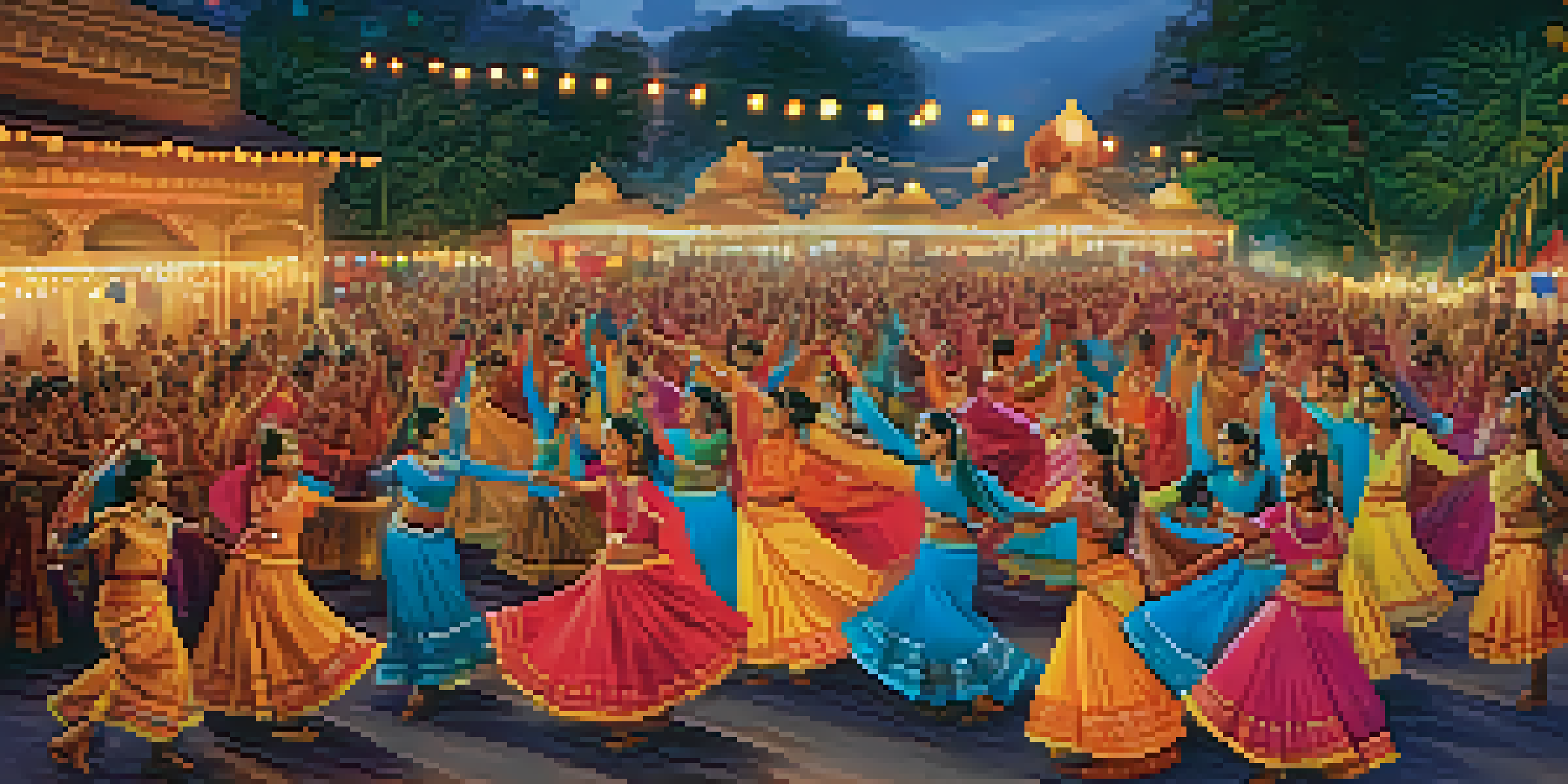The Impact of Music and Dance on India's Tourism Industry

Music and Dance: Cultural Pillars of Indian Tourism
India's rich tapestry of music and dance serves as a cultural cornerstone that attracts countless tourists each year. From classical forms like Bharatanatyam to folk traditions like Bhangra, these art forms showcase the country's diverse heritage. Visitors are not just spectators; they become part of an immersive experience that highlights India's vibrant culture. This unique engagement captivates tourists, making them eager to explore more of what India has to offer.
Festivals: A Melodic Magnet for Tourists
Festivals in India, infused with music and dance, are a significant draw for tourists. Events like Diwali and Holi transform cities into colorful celebrations, where traditional performances become a central focus. These festivities attract both domestic and international visitors seeking to experience the joy and energy of Indian culture. By participating in these events, tourists gain a deeper appreciation for the local customs and traditions.
Cultural Arts Drive Tourism Growth
India's rich music and dance traditions attract tourists, offering immersive cultural experiences that highlight the country's heritage.
Music and Dance in Tourism Marketing
The tourism industry in India effectively leverages music and dance in its marketing strategies. Promotional materials often feature vibrant images of dancers and musicians, creating a compelling visual narrative. This approach not only enhances the appeal of destinations but also encourages tourists to explore local performances. By highlighting these unique cultural elements, tourism boards can attract a wider audience looking for authentic experiences.
Culinary Experiences Enhanced by Dance and Music
In India, dining is often complemented by live music and dance, creating a multisensory experience. Many restaurants and cultural venues offer performances that elevate the meal, turning it into a feast for the senses. This combination adds an extra layer of enjoyment, making meals memorable for tourists. As a result, culinary tourism flourishes alongside the vibrant performances that accompany it.
Festivals Showcase Vibrant Traditions
Festivals like Diwali and Holi draw visitors with their lively music and dance, allowing tourists to engage deeply with local customs.
Traditional Arts and Their Economic Impact on Tourism
The flourishing of traditional music and dance forms has a notable economic impact on India's tourism sector. Local artists and performers benefit from increased visibility and opportunities as tourists flock to their shows. This economic boost extends to related industries, such as hospitality and local crafts. By investing in and promoting these art forms, India not only preserves its cultural heritage but also enhances its tourism economy.
Community Involvement: The Heart of Cultural Tourism
Community engagement plays a crucial role in the success of music and dance in tourism. Local groups often organize performances that allow visitors to connect with residents and learn about their traditions. This creates a sense of authenticity, as tourists experience the culture from the perspective of those who live it daily. Such interactions foster a deeper understanding and appreciation of Indian culture.
Sustainability in Cultural Tourism
The focus on sustainable practices in music and dance events is crucial for preserving cultural heritage while attracting future tourists.
The Global Influence of Indian Music and Dance
Indian music and dance are gaining popularity on the global stage, influencing artists and audiences worldwide. This international recognition draws tourists curious to experience the roots of these art forms. Events such as international dance festivals feature Indian performances, showcasing the country's rich cultural heritage. As more people become interested in Indian music and dance, tourism in India continues to thrive.
Future Trends: Sustainability in Cultural Tourism
As the tourism industry evolves, sustainability is becoming a focal point, particularly in cultural tourism. Efforts to promote eco-friendly practices in music and dance events are on the rise, ensuring that cultural heritage is preserved for future generations. By prioritizing sustainability, India can continue to attract tourists while respecting its rich traditions. This balance is essential to maintaining the integrity of the cultural experiences that draw visitors in the first place.